JAGUAR LAND ROVER POWERS UP NEW INGENIUM ENGINE FAMILY
- Ingenium is an all-new family of compact, lightweight, low-emissions diesel and petrol turbocharged engines that deliver both the efficiency and performance that our global customers desire
- Configurable and flexible common diesel and petrol architecture enables maximum manufacturing efficiency, more variants, higher quality and greater speed to market
- Designed and engineered in-house by Jaguar Land Rover engineers, volume production begins in early 2015 at the all-new Jaguar Land Rover Engine Manufacturing Centre near Wolverhampton, UK
- Weighing up to 80kg less than today’s engines, Ingenium uses patented technologies to reduce friction and deliver class-leading CO2 emissions, refinement and high performance
Whitley, UK: Ingenium, the new family of premium diesel and petrol engines designed, engineered and manufactured by Jaguar Land Rover, delivers class-leading levels of torque, horsepower and refinement while reducing emissions and fuel consumption.
The company today revealed more of the technical details of these new lightweight, compact low-emissions modular enginesas it showcased some of the company’s future technologies.
Ingenium: Configurable, Flexible, Modular
Jaguar Land Rover has developed its own new family of advanced technology, low-friction, high-performance petrol and diesel engines to meet growing customer demand for lower fuel consumption and cost of ownership, without compromising performance and the driver experience.
Ingenium’s design brief presented Jaguar Land Rover’s engineers with a tough and complex challenge. Its new engine family would need to be:
- Configurable and flexible to enable seamless installation in a range of new Jaguar and Land Rover vehicles
- Scalable up and down to create smaller or larger displacement variants in the future
- Able to accommodate a range of powertrain layouts including rear-, all- and four-wheel drive
- Engineered to support manual and automatic transmissions as well as electrified hybrid drive systems
- Easily accepting of new advances in engine technologies as they become available
Jaguar Land Rover powertrain engineers at the company’s Whitley and Gaydon development facilities have based Ingenium’s foundation on extremely strong and compact aluminium blocks for both diesel and petrol versions.
These lightweight blocks share the same bore, stroke, cylinder spacing and 500cc cylinder capacity. This helps give Ingenium the configurability and flexibility around which smaller or larger engines can quickly and efficiently be developed to meet future regulatory and competitive requirements. To support the development of this future powertrain technology, including the new Ingenium family, Jaguar Land Rover has invested £40 million to expand and enhance its Powertrain Engineering facility at its Whitley Technical Centre.
All diesel and petrol Ingenium variants will be equipped with state-of-the-art turbochargers that improve performance, particularly at low speeds, and that help reduce consumption and CO2 emissions.
Ingenium’s modular design enables both petrol and diesel engines to share many common internal components and calibration strategies. This reduces complexity, raises quality and simplifies manufacturing, and allows Jaguar Land Rover to react more quickly to changes in global demand.
“Customers around the world are increasingly demanding cleaner-running, more efficient vehicles that maintain or even enhance the performance attributes expected of a rugged all-terrain vehicle or a high performance car. Our Ingenium engines deliver this to a new level,” said Dr. Wolfgang Ziebart, Jaguar Land Rover Group Engineering Director.
“Engineering and manufacturing our own engines improves our ability to react to changes in demand and improves our ability to react to changes in legislation and competitive technologies in the future,” added Dr Ziebart. “We believe that with the range of technologies we are investing in, Jaguar Land Rover can absolutely satisfy the often conflicting requirements of delivering engaging high-performance luxury vehicles that reduce our carbon footprint in the long-term.”
Technology Powerhouse
Ingenium bristles with innovations that will deliver more of what Jaguar Land Rover’s global customers expect from premium high-performance engines: outstanding low-end torque, effortless acceleration and class-leading emissions performance with low consumption.
One strategy Jaguar Land Rover powertrain engineers used to accomplish this was a focus on reducing internal friction.
In the first Ingenium engine to go into volume production, a 2.0-litre diesel known as AJ200D, friction is reduced by 17 per cent compared to the current engine, helping to make it one of the most efficient and responsive 2.0-litre turbo diesels in its segment.
Ingenium engines feature six key technologies that combine to reduce friction, add refinement and improve performance. They include:
- Roller bearings on cam and balancer shafts, instead of machined-in bearing surfaces.
- Computer-controlled variable oil pumps that save energy by delivering the optimum amount of oil at all speeds, engine loads and temperatures.
- Computer-controlled variable water pumps that adjust the amount of coolant flowing through the engine, based on temperature, speed and driving conditions. The split or twin circuit cooling system offers the twin benefits of lowering CO2 emissions by enabling fast warm ups, and providing quick cabin heat on cold days.
- Simplified cam drive system designed for modular application.
- Crankshafts that are offset from the centre of the block.
- Electronically controlled piston cooling jets to improve efficiency in the oil pumping circuit. Jets are switched off when piston cooling is not needed. They also enable the engine to reach its optimum operating temperature faster, further helping to reduce CO2 emissions.
All Ingenium engines will be equipped with advanced and efficient turbochargers, central direct high-pressure fuel injection, variable valve timing and start-stop technology.
Ingenium will also come to market as one of the most tested and proven Jaguar Land Rover engines ever. Before the first Ingenium engine is sold, it will have already undergone the equivalent of more than eight years of the toughest, most punishing testing that Jaguar Land Rover engineers could devise. These tests include a huge range of integrity and durability testing, including more than 72,000 hours of dyno testing and 2 million miles of real-world testing to ensure these engines deliver – and continue to deliver.
Key Role in Vehicle Weight Reduction
Jaguar Land Rover already leads the industry in the production of lightweight, aluminium-bodied vehicles. The introduction of Ingenium unites the company’s light-weight chassis expertise with powertrains specifically designed and calibrated to complement reduced weight vehicles.
Jaguar Land Rover engineers are focusing on reducing vehicle weight by optimising every component in every system, powertrains included. Despite adding features and increasing power output, Ingenium engines weigh as much as 80kg less than today’s equivalent engines.
“Ingenium fulfils our commitment to offer our global customers some of the most advanced powertrains available in some of the lightest vehicles in the premium SUV and performance car segments,” said Ron Lee, Jaguar Land Rover Director of Powertrain Engineering.
“Being configurable and flexible are the two key strands of Ingenium’s DNA because we have future-proofed our new engines from the outset. Ingenium will be able to accept new advances in fuel, turbocharging, emissions, performance and electrification technologies when they are ready and accessible to be deployed.
“We were able to design Ingenium in this way because we had the rare opportunity to start the project with a clean sheet of paper. We weren’t locked into any of the usual restrictions that force engineering compromises because we had no existing production machinery that would dictate design parameters, no carryover engine architectures to utilise and no existing factory to modify,” said Lee.
- Britain’s leading premium automotive manufacturer officially opens the doors to its new world-class Engine Manufacturing Centre.
- Jaguar Land Rover brings engine manufacturing in-house for the first time in a generation.
- The new £500m Engine Manufacturing Centre cements Jaguar Land Rover’s position as the UK’s leading automotive investor.
- Facility supports regional regeneration with 1,400 jobs created.
Jaguar Land Rover today marked a seminal moment in its history with the official opening of its new Engine Manufacturing Centre. The £500m facility, announced in September 2011, represents a significant step in Jaguar Land Rover’s strategic investment programme and will see engines being produced in-house for the first time in a generation.
Located near Wolverhampton in the West Midlands, the Engine Manufacturing Centre is home to the Ingenium engine family which will power a new generation of Jaguar Land Rover products designed, engineered and manufactured in the UK. This starts with the 2.0-litre diesel, which rolls off the production line early next year, destined for the new Jaguar XE.
Commenting on the opening Dr. Ralf Speth said: “The Engine Manufacturing Centre represents all that is great about British engineering.
“Jaguar Land Rover is a business driven by design, technology and innovation and this investment and level of job creation is yet further evidence of our commitment to advancing the capability of the UK automotive sector and its supply chain.”
With a vision to set a new global benchmark for excellence in engine manufacturing, Jaguar Land Rover is drawing on the expertise of 2,000 powertrain engineers who have been inspired by the company’s 70-year heritage in the design and development of iconic engines. These engineers, together with the new 1,400 strong team at the Engine Manufacturing Centre, will deliver the next generation of highly efficient, ultra-low emission 4-cylinder petrol and diesel engines.
Jaguar Land Rover broke ground on the i54 Business Park site in June 2012. Today, the 100,000 square metre, state-of-the-art facility, houses an engine-testing centre alongside manufacturing and assembly halls, and meets the highest standards of sustainable production.
Awarded a rating of ‘excellent’ by BREEAM, for sustainable buildings, the facility is home to the largest rooftop solar panel installation in the UK, comprising no fewer than 21,000 individual panels. It is estimated that these panels will generate more than 30% of the plant’s energy requirements – providing the same amount of energy required to power 1,600 homes.
Commenting on the importance of the Engine Manufacturing Centre, Trevor Leeks, Operations Director at the site said: “I am proud to be leading the world-class team who will bring years of hard work to fruition as we execute the flawless launch of Jaguar Land Rover’s first in-house engines in a generation.
“Our new Engine Manufacturing Centre is an important step in advancing the competitiveness and capability of the UK automotive sector. The production of in-house engines will support the expansion of the UK supply chain providing critical mass for inward investment.”
FUTURE-PROOF – AN INTRODUCTION TO THE ENGINE MANUFACTURING CENTRE
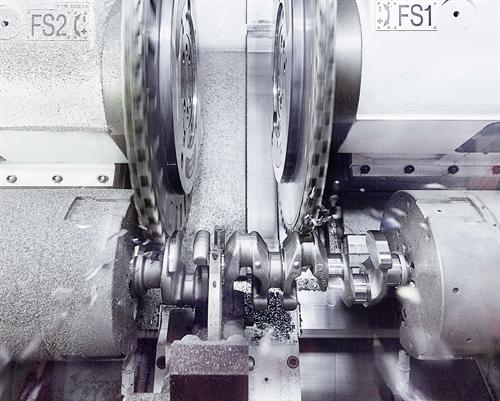
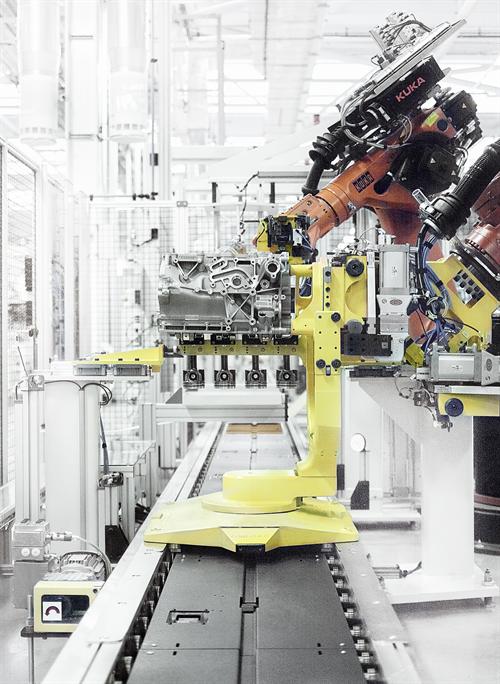
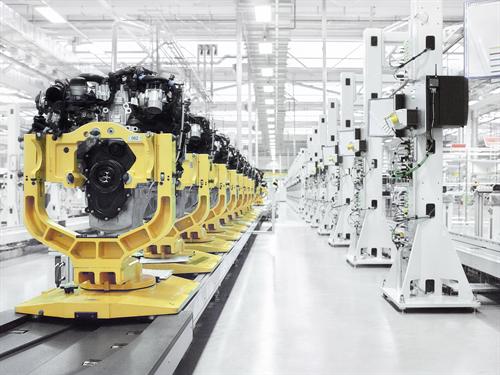
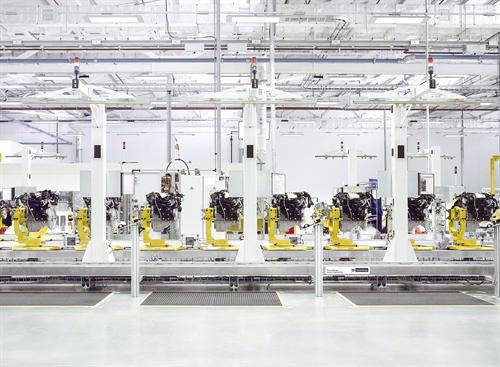
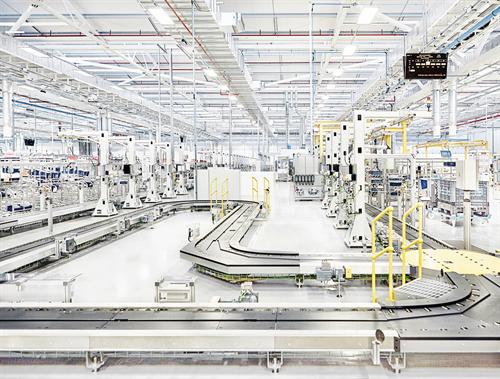
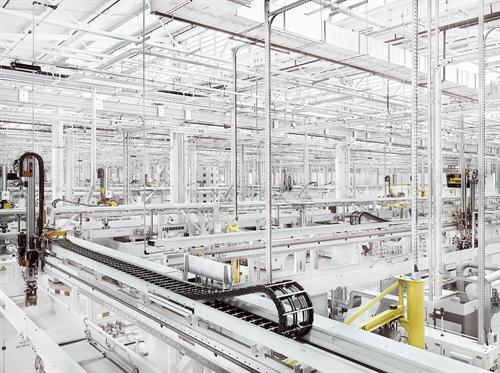
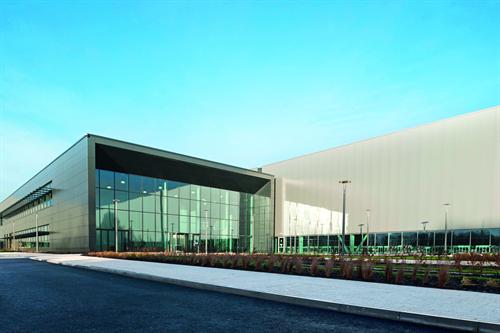 The opening of the state-of-the-art Engine Manufacturing Centre is a seminal moment for Jaguar Land Rover as it embarks on manufacturing engines in-house for the first time in a generation, confirming its position as the UK’s most significant automotive investor.
The opening of the state-of-the-art Engine Manufacturing Centre is a seminal moment for Jaguar Land Rover as it embarks on manufacturing engines in-house for the first time in a generation, confirming its position as the UK’s most significant automotive investor.
The Engine Manufacturing Centre will be home to the ‘Ingenium’ engine family, which will power a new generation of Jaguar Land Rover products designed, engineered and manufactured in the UK. This starts with the 2.0-litre diesel engine in the Jaguar XE. Jaguar Land Rover is transforming its business and brands through a programme of sustainable, strategic investments.
This £500 million facility is the latest demonstration of the company’s commitment to supporting the UK’s burgeoning manufacturing industry. When operating at full capacity, the Engine Manufacturing Centre will employ 1,400 people with a further 5,500 jobs created in the supply chain, where production of these engines will help provide a critical mass for inward investment.
At the heart of the Engine Manufacturing Centre is a team of people committed to setting a new global benchmark in the way engines are manufactured. Through an unrelenting commitment to training, Jaguar Land Rover is developing the skills required to future-proof its engineering capability and provide a sustainable foundation for continued business growth.
Welcome to the future of engine manufacturing in Britain.
THE HALLMARKS OF APPROVAL – THREE ROYAL WARRANTS
“Our Royal Warrants contribute to Jaguar Land Rover’s accelerating global growth, helping us to take exciting British design and advanced British engineering around the world.”
Dr Ralf Speth, Chief Executive Officer, Jaguar Land Rover
Jaguar Land Rover is extremely proud to welcome Her Majesty The Queen and His Royal Highness The Duke of Edinburgh to the all-new Engine Manufacturing Centre. The company holds the Royal Warrant as “Manufacturers of Motor Vehicles, By Appointment” from all three current grantors: HM The Queen, HRH The Duke of Edinburgh and HRH The Prince of Wales.
Jaguar Land Rover is the only automotive manufacturer granted all three Royal Warrants. For nearly 900 years the Royal Warrant has been one of the proudest acknowledgements of quality around the world. It is granted to represent not only simple excellence of product or service, but also the personal preferences of the Royal grantors. A fleet of 10 Land Rovers, each bearing the Royal Crest and the Royal Standard, was used when HM The Queen and HRH The Duke of Edinburgh undertook their 44,000-mile tour of the Commonwealth in 1953/54, soon after the Coronation.
Since then HM The Queen, HRH The Duke of Edinburgh and other members of the Royal Family have regularly used a wide variety of Jaguar Land Rover vehicles.
PRECISE ENGINEERING – THE MACHINING HALL
“Almost half the total investment on the project was made on these machines.”
Paul Blackman, Production Area Manager
This area represents the cutting edge of manufacturing technology, utilising 150 state-of-the-art machines working across three lines. Everything from assembly robots and lasers to drilling and high-pressure wash machines operate here, representing an investment of more than £150 million.
The first line is where the aluminium block begins its transformation from a simple chunk of metal to the technologically advanced heart of the Ingenium engine. It is heated in an oven before undergoing a series of machining operations, always punctuated by high-pressure washes to filter debris away. The second line contains the cylinder head, which undergoes a similar process. The crankshaft line differs as it is machining forged steel, not aluminium. Here, the steel is milled, turned and drilled. Both automated and manual tests take place throughout each line, ensuring that each component is made to the highest standard of quality possible.
This area represents the precision of technology, driven by human craftsmanship. It is where the very first parts of the engines are made, containing within them the DNA of Ingenium.
PIECE BY PIECE – THE DIESEL ASSEMBLY HALL
“The assembly line is the birth of the engine.”
John Turner, Assembly Area Manager
This is where approximately 245 separate parts come together to form an engine derivative. It is also where Jaguar Land Rover’s commitment to people is most evident; more than 150 associates currently work here, across a total of 17 zones.
More associates will join the team when the petrol Assembly Hall also becomes operational. The aluminium block, cylinder head and crankshaft move through the zones, each one bolstered by additional components and rigorous testing, before finally joining together.
The engine is then cold tested, an eco-friendly procedure that ensures the highest quality standards are met, before leaving the assembly line.
If the Machining Hall is where the journey of the engine begins, then the Assembly Hall is where it is given life, going from a disparate assemblage of components to a finished engine, the first member of the Ingenium family that will power a new generation of Jaguar Land Rover products.
LOGISTICS – EVERYTHING IN ITS PLACE
The logistical challenge that a facility of this scale represents is immense, and the logistical department is every bit as vital to the success of the centre as the manufacturing process itself.
The Engine Manufacturing Centre has 71 suppliers, approximately 30 per cent of which are based in the UK. Hundreds of individual parts will be required when both diesel and petrol divisions are operational. These will be delivered to two main receiving areas – five bays in the Assembly area and two in the Raw Materials area. Once inside the facility, the parts will be transported on specially adapted cargo trains, making 133 movements a day, facilitating a huge volume of engines while never compromising on quality.
This process has an inherent capacity for flexibility, allowing logistical operations to keep up with the rapidly evolving demands of the modern automotive industry.
PUTTING THE FACT IN FACTORY
Top 10 details about the Engine Manufacturing Centre
- £500 million investment
- 100,000m2 in size – the equivalent of 14 football pitches
- 6,500m3 of topsoil excavated from the site
- 4,400 tonnes of hot-rolled steel used in the construction
- 32.1 miles of trenching for ducts and drainage
- 21,000 photovoltaic panels on the roof, providing the same amount of energy required to power 1,600 homes
- £650,000 – the average cost of one of the high-tech machines in the Machining Hall
- 0.003 millimetres – the detailing on a crankshaft is polished to be less than the width of a strand of human hair
- 245 – approximate number of parts in each engine derivative
- 90 seconds – time taken to perform a cold test on a single engine
ALIVE WITH TECHNOLOGY – INGENIUM
“Customers are increasingly demanding cleaner running, more efficient vehicles that maintain or even enhance performance attributes. Our Ingenium engines deliver this to a new level.”
Dr. Wolfgang Ziebart, Jaguar Land Rover Group Engineering Director
These engines will be Jaguar Land Rover’s most advanced ever. This new family of premium, lightweight, four-cylinder units will utilise the most flexible engine architecture ever produced by Jaguar Land Rover, making them efficient, powerful and capable of producing up to 300Nm of torque while emitting as little as 99g/km of CO2.
The core of Ingenium comprises extremely strong and compact aluminium blocks, which will allow a range of engines to be developed, both quickly and efficiently, to meet the rigorous regulatory and competitive requirements of the future.
All variants will be equipped with high-tech turbochargers that improve performance, and help reduce CO2emissions. Their modular design enables petrol and diesel engines to share many common internal components.
This reduces complexity, raises quality and simplifies manufacturing. Despite adding features and increasing power output, Ingenium engines weigh as much as 80kg less than equivalent engines of today. The Engine Manufacturing Centre will allow Ingenium engines to deliver outstanding low-end torque, effortless acceleration and class-leading emissions performance with low consumption.
Before the first Ingenium engine leaves the factory, it will have already undergone the equivalent of more than eight years of the toughest, most punishing testing that Jaguar Land Rover engineers could devise. These include more than 72,000 hours of dyno testing and 2 million miles of real-world testing.
FAMILY VALUES – NURTURING SKILLS AND EXPERTISE
We will be the benchmark for excellence across the globe, creating a legacy for generations to come through a tenacious approach to continuous improvement. A proud and passionate family who live our values to create a supportive learning environment where there is equality and mutual respect for all.
The Engine Manufacturing Centre Vision
Amongst the first objectives of the Engine Manufacturing Centre operations team was the establishment of a Vision and Values by which its entire workforce would live. These values will ensure that each and every employee plays their part in delivering the flawless standards required to set a new global benchmark for excellence in engine manufacturing.
When at full capacity the engine manufacturing centre family will be 1,400 strong, with each member showcasing world-class skills and expertise in the UK’s automotive heartland, creating a legacy for generations to come. To deliver this, a bespoke two-week training programme called ‘The Powertrain Way’ was developed to teach all employees, from HR consultants to machine operators, the lean engineering principles at the heart of the engine manufacturing operation.
CLEAN AND GREEN – SUSTAINABILITY
To date, more than 20,000 training hours have been completed by 254 associates, driving quality standards forward.
The Engine Manufacturing Centre has been designed with sustainability embedded throughout and has recently been awarded a rating of ‘excellent’ by BREEAM, for sustainable buildings.
The centre has the largest rooftop solar panel installation in the UK, comprising no fewer than 21,000 individual panels. It is estimated that these panels will generate more than 30 per cent of the site’s energy, reducing its CO2 footprint by more than 2,400 tonnes per year.
Debris from the manufacturing process is filtered away and prepared for transport off-site. This is an environmentally friendly process, and the recycled aluminium briquettes created from it bolster the facility with additional revenue.
The production halls are ‘clean room’ environments, ventilated by a positive air system. Energy monitoring facilities in the plant continually analyse the amount of energy being used and identify opportunities to reduce electricity and gas consumption.
